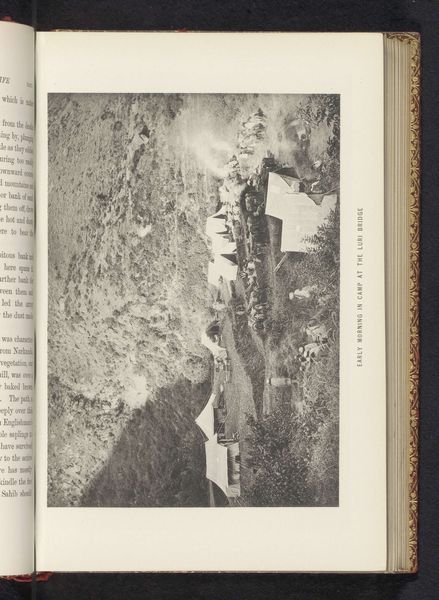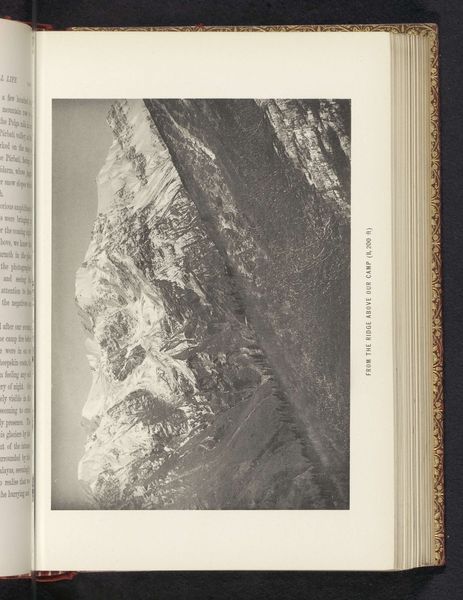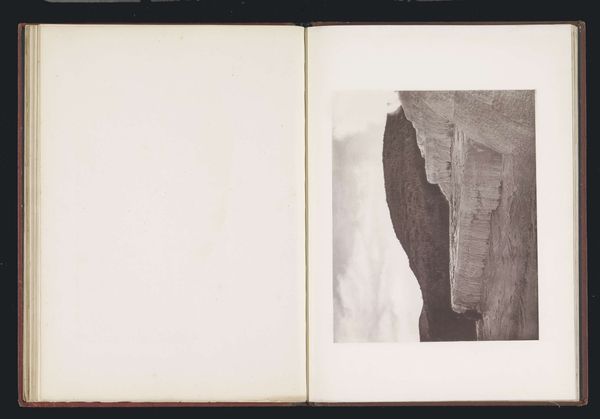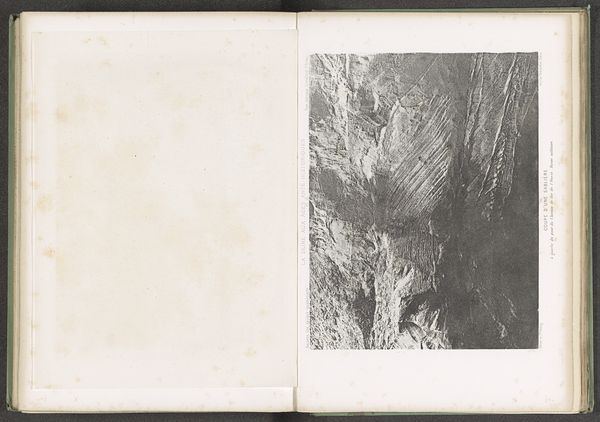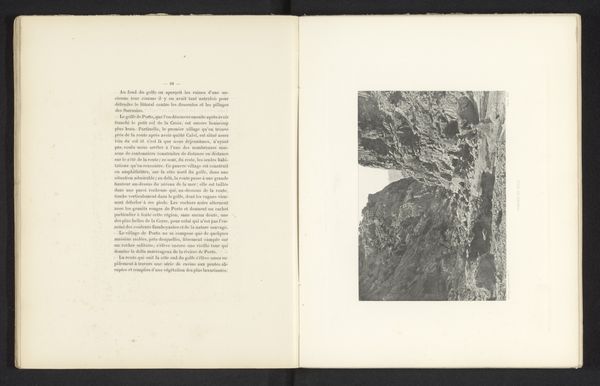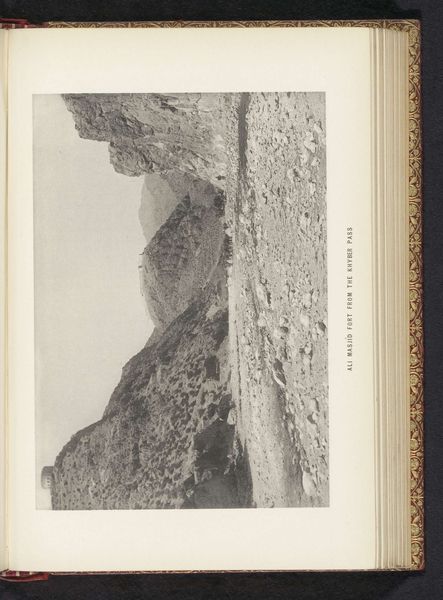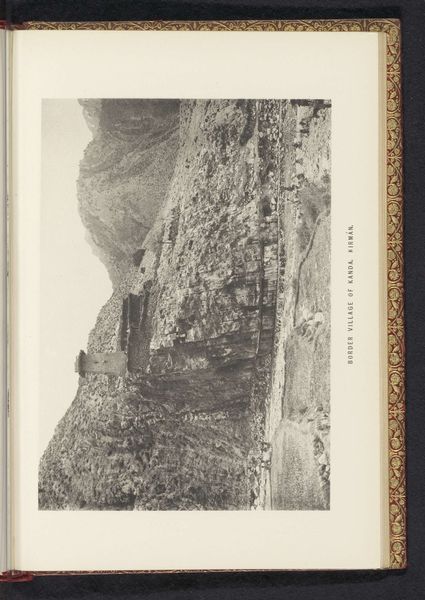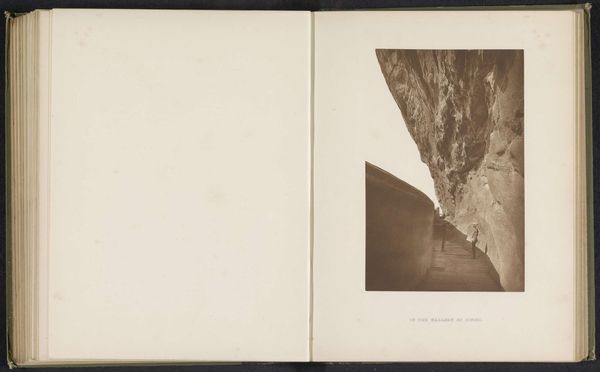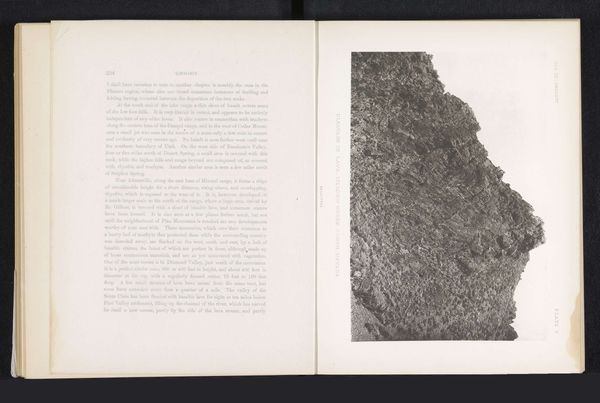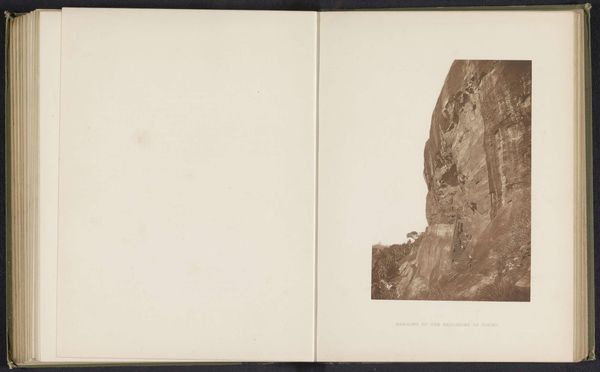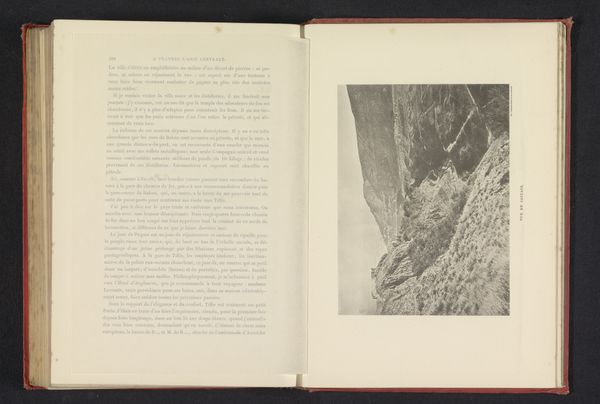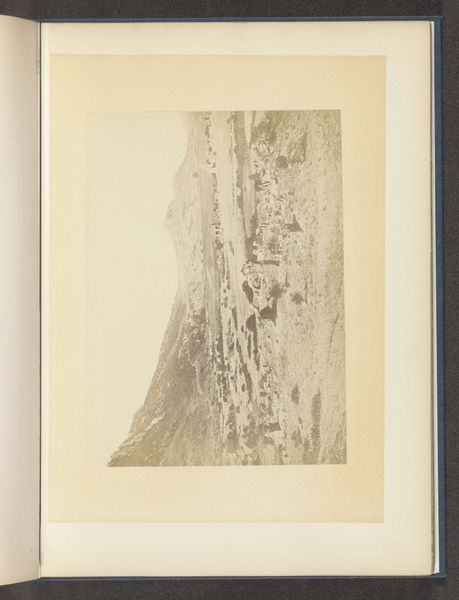
photography, albumen-print
#
landscape
#
river
#
photography
#
orientalism
#
albumen-print
Dimensions: height 119 mm, width 168 mm
Copyright: Rijks Museum: Open Domain
Editor: Here we have "The Sainj River at Larji," a photograph taken by Frederick Saint John Gore before 1895. It’s an albumen print, quite striking in its starkness. What grabs me is the way the bridge bisects the composition; it feels like a deliberate severing of the natural landscape. How do you interpret this work? Curator: The division you observe is key. Consider the linear progression: the bridge isn't simply bisecting, but acts as a strong diagonal, driving the viewer's eye deep into the pictorial space. Note how the tones themselves articulate depth—from the textured foreground, leading us towards that brighter area where river meets sky. This carefully managed light contributes a feeling of monumentality; have you considered that it's structured much like a traditional history painting? Editor: A history painting? That’s interesting, considering it’s a landscape. I was so focused on the contrast between the natural and man-made elements. The way the jagged rocks jut against the smooth water also strikes me. Curator: Precisely. But is it merely contrast? Look at the bridge construction, a kind of cage against this backdrop, these stark planes and geometrical shapes create a fascinating sense of enclosure amid immensity, where our perception is guided along rigorous spatial dimensions. Do you see any symbolism that is built into this spatial structure? Editor: I see your point. The bridge, as a man-made element, does draw your eye, pushing beyond to what could have been solely a beautiful natural landscape shot. I suppose it emphasizes humanity's intrusion into, or maybe navigation of, the natural world. Curator: Indeed. And thinking formally, we see that by emphasizing planes and lines in stark relief, the piece encourages reflection on more than the represented content. This invites inquiries into representation and, perhaps, our complex interactions with such landscapes. Editor: That completely reframes my understanding of the photo. Focusing on those intrinsic design elements really opened it up for me. Curator: Yes, paying close attention to these arrangements offers access into many perspectives!
Comments
No comments
Be the first to comment and join the conversation on the ultimate creative platform.

